Military drones based on decommissioned aircraft
In the last decade, in a number of countries, work is underway to convert decommissioned aircraft into decoys or even carriers. aviation means of destruction. Such unmanned aerial vehicles, moving in the first wave of attack aircraft, ahead of manned fighter-bombers, must clear the way for them, taking on the attacks of anti-aircraft missiles and attacks of fighter-interceptors available to the defending side, identify the location of anti-aircraft positions and radar stations. When suspending aviation weapons, destroy the detected air defense systems, surveillance radars and attack other targets. Currently, on the basis of manned aircraft, transport Dronesdesigned to deliver cargo to areas where there is a high probability of shooting down a manned military transport aircraft.
Unmanned An-2 in combat on the territory of Nagorno-Karabakh
In September-October 2020, during the hostilities on the territory of Nagorno-Karabakh, the Azerbaijani side very actively and effectively used remotely piloted vehicles and patrolling guided munitions, mainly of Turkish and Israeli origin.
According to information published in the American media in early 2020, the Azerbaijani armed forces had 2 Israeli reconnaissance and patrol drones Heron TP, 2 Hermes 900 and 10 Hermes 4507, about a hundred "drones-kamikaze "Sky Striker and fifty Harop. Azad systems, a joint venture with Israel, produced the Aerostar reconnaissance drones and the Orbiter kamikaze.
The "star" of this conflict was a Turkish-made UAV Bayraktar TB2. According to unconfirmed reports, by the beginning of the conflict, Azerbaijan could have up to two dozen such remotely controlled devices.
The official Russian media were very restrained in their comments on the course of the conflict and the reasons for the defeat of the Armenian forces. However, Western experts did not hesitate to comment, which in combination with the videos published on the Internet made it possible to objectively judge what had happened.
Based on the available information, it can be concluded that the command of the armed forces of the unrecognized Nagorno-Karabakh Republic was not ready for war and made gross miscalculations in the planning of hostilities. Errors in ensuring the camouflage of military installations, planning the actions of reconnaissance means, combat control, electronic countermeasures and air defense had a particularly catastrophic effect.
As an excuse for the defeat of the Armenian side, the argument is often cited that on the territory of Nagorno-Karabakh there were mainly outdated Soviet-made air defense systems. This, of course, is an important factor, but based on the information available in the public domain, it can be concluded that the calculations of anti-aircraft missile systems in most cases acted illiterately, did not receive external target designation and often had no connection with the higher echelon. In turn, the NKR military leadership was unable to establish effective work, albeit partly outdated, but quite capable air defense systems, their interaction, mutual cover, camouflage and timely change of positions.
All this led to the fact that the Azerbaijani military managed to suppress the enemy's air defense system and, having achieved air supremacy, turn the course of hostilities in their favor.
An interesting and indicative moment of the Second Karabakh War was the use of outdated An-2 aircraft to open the air defense system of the defending side. According to information published in open sources, Azerbaijan has converted a significant number of obsolete biplanes into radio-controlled drones.
These aircraft, being on the verge of depletion of a resource, were converted into UAVs in order to "clear the way" for modern Azerbaijani drones and Su-25 attack aircraft.
Azerbaijan inherited more than 70 biplanes from the USSR, but by now they are at the end of their life cycle. Satellite images taken shortly before the start of the conflict recorded about 265 An-60 aircraft at the Yevlakh military airfield, located 2 km west of Baku.
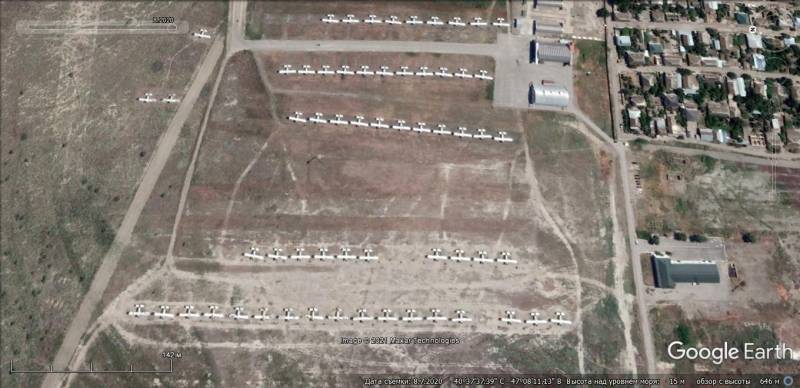
Satellite image of Google Earth: An-2 aircraft at the Yevlakh airfield, the image was taken in July 2020
It must be said that such an approach to the use of machines that have exhausted their resource and are subject to a quick write-off is quite justified. Being a low-speed, fairly large aircraft, clearly visible visually and on radar screens, the unmanned An-2 forced the NKR air defense system to respond, distracted from more important targets, forced to spend missiles on itself and unmasked anti-aircraft positions, which were subsequently struck by modern drones.
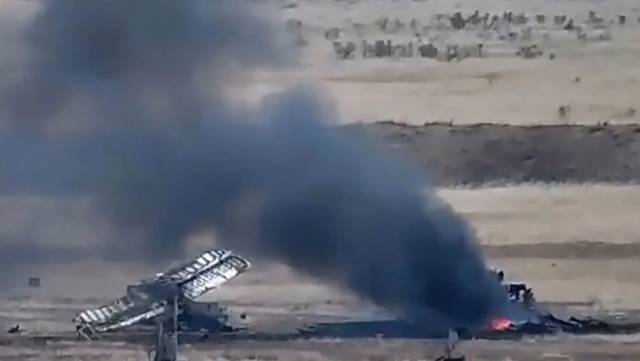
At least 10 Azerbaijani An-2s were shot down in the conflict zone. The single information center of Nagorno-Karabakh reported on 18 shot down enemy aircraft, without specifying their type.
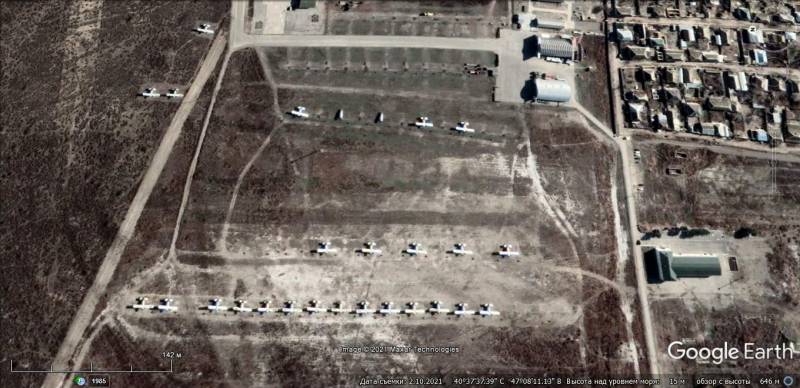
Satellite image of Google Earth: An-2 aircraft at the Yevlakh airfield, the image was taken in October 2021
However, in fact, Azerbaijan could lose, for various reasons, including a technical one, much more An-2 aircraft converted into UAVs. Satellite images taken in October 2021 show that the number of biplanes in the parking lot at the Yevlakh airfield has more than halved.
A number of sources say that the Azerbaijani An-2 were manned. After taking off, the pilot firmly fixed the controls, and was thrown out by parachute. However, this seems unlikely, since if the pilot left the plane at a considerable distance from the conflict zone, this did not guarantee that the heavily worn biplane would continue to fly in the desired direction. And parachuting in a combat zone was fraught with mortal risk.
Chinese UAVs converted from manned aircraft
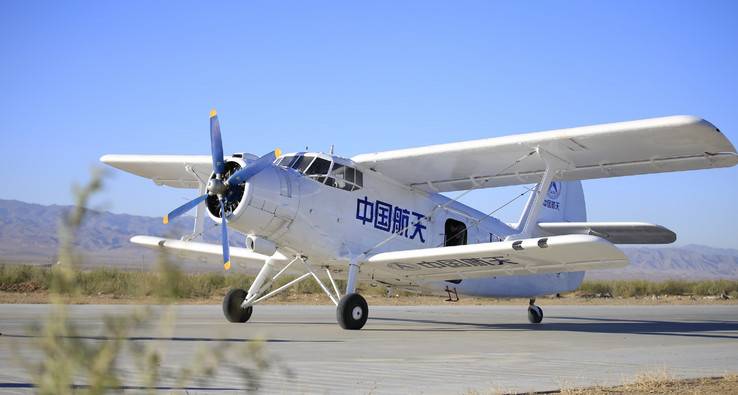
Even before the aggravation of the situation in Nagorno-Karabakh, information appeared in the Chinese segment of the Internet that an unmanned modification of the Y-5B aircraft (Chinese version of the An-2) had been created in the PRC, which received the designation Feihong 98 (FH-98).
The Chinese FH-98 is positioned as the world's largest unmanned transport aircraft with a take-off weight of 5250 kg, a payload of 1500 kg and an internal cargo compartment volume of 15 m3... Maximum flight altitude - 4500 meters, cruising speed - 180 km / h, practical range - 1200 km, takeoff run with maximum load - 235 m.
The first flight of the FH-98, created by China Aerospace Science and Technology Group, took place in 2018. The tests were successful, and from the second half of 2019, the conversion of several used Y-5B aircraft into the FH-98 UAV began.
Judging by the footage shown on Chinese television, the tests were carried out by the military, and a ground station created for other Chinese reconnaissance and strike drones was used to control the cargo drone. During a demonstration flight from an unmanned biplane, a cargo container was dropped by parachute at a given point.
The main purpose of the FH-98 UAV is to deliver cargo to areas where the likelihood of a manned transport aircraft or helicopter being shot down by the enemy is too high. In addition, the drone can also be used for dropping large-caliber aircraft ammunition, laying mines and as a decoy.
Work on creating its own drones began in China in the second half of the 1960s. The first Chinese UAVs to enter serial production were created by Xi'an Northwest Polytechnic University. The Va-2 and Va-7 devices entered service in the early 1970s and were intended to train anti-aircraft artillery crews. These were very simple and cheap radio-controlled targets made of plywood with piston engines, launched by solid fuel boosters from a towed launcher.
In 1976, the release of the SK-1 (ChangKong-1) UAV was launched, which in many ways was a copy of the Soviet La-17 radio-controlled target. In addition to training the calculations of the HQ-2 air defense system (the Chinese version of the C-75) and the development of new anti-aircraft missiles, a modification of the SK-1V was created, designed for sampling during nuclear tests. This unmanned vehicle was used for the first time in "combat conditions" at the Lop Nor test site in 1978, ending the extremely dangerous practice of using manned aircraft to take samples from a nuclear explosion cloud.
In the early 1980s, the conversion into radio-controlled targets of the exhausted airframes of the J-5 and JJ-5 jet aircraft (single and double modifications of the MiG-17 fighter) began. The target, created on the basis of a single-seat fighter, received the designation Ва-5, and on the basis of the TCB - Ва-5i.
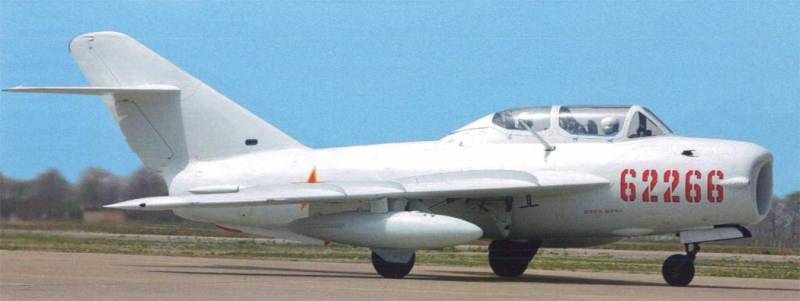
JJ-5 combat trainer
The Ba-5 and Ba-5i radio-controlled aircraft, which are still in use, are capable of independently taking off and landing. In order to change the radar and thermal portrait, Luneberg lenses and IR simulators are installed on target aircraft. For a detailed analysis when testing new anti-aircraft systems, video recording systems were mounted on late-release unmanned targets.
As of today, most of the Ba-5 and Ba-5i unmanned aircraft are concentrated at the Hendogli airbase.
Hendogli Air Base, located in the sparsely populated northwestern part of China, in Gansu province, Inner Mongolia region, is the center of the PLA air force's combat use. According to information published in open sources, an aircraft repair enterprise operates in the vicinity of the airbase, where obsolete aircraft are converted into radio-controlled targets. Until recently, about a hundred decommissioned J-5 and JJ-5 aircraft were stored on the territory of the enterprise.
The area is also home to the Jiuquan Cosmodrome, China's largest Dingxing Air Force Range, and the Air Defense Force Test Center, known as Site 72.
Taking into account the fact that about a dozen aerial targets have been destroyed annually at the training ground during combat firing in recent years, there are already not many unmanned aircraft Ba-5 and Ba-5i left in the PLA Air Force.
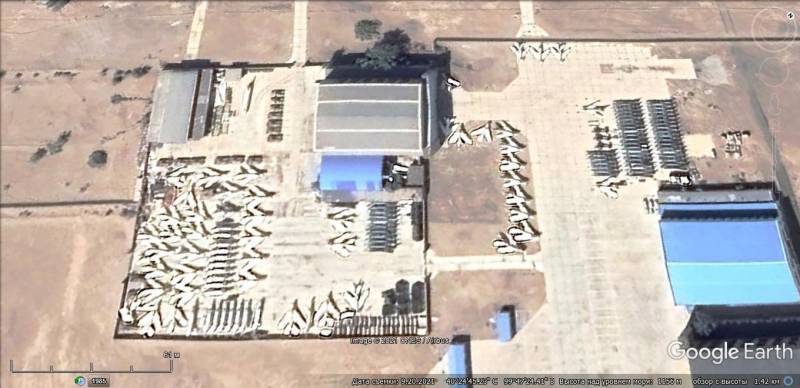
Satellite image of Google Earth: aircraft J-6 and JJ-6 parked in the vicinity of Hendogli airbase, the picture was taken in 2021
Currently, the J-6 fighters (the Chinese version of the MiG-19) and the two-seat combat training JJ-6s taken from storage are actively being converted into radio-controlled targets. The first J-6 was converted into a target in 1995.
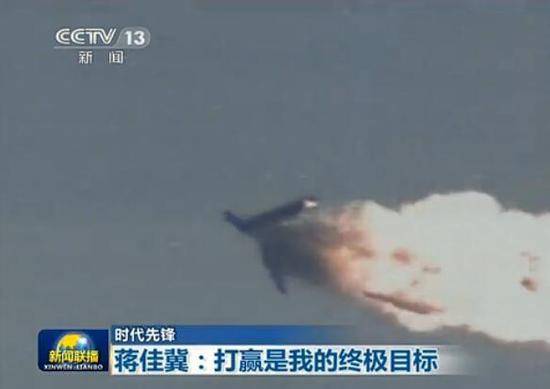
In 2015, a story was shown on the Chinese television channel CCTV, which stated that during the Golden Helmet flight competition, J-11 fighter pilot Jiang Chiayi shot down a J-6 unmanned aerial vehicle with a rocket.
Apparently, in the future, the supersonic J-7 and J-8II will be converted into unmanned target aircraft, which are currently being replaced in the combatant regiments by the J-10, J-11 and J-16 aircraft.
By the second half of the 1970s, the J-6 fighter, designed in the early 1950s, was considered obsolete. Due to economic and technological difficulties in China, they could not fully replace the J-6 with modern front-line fighters J-7 (a copy of the MiG-21) and interceptors of their own design J-8.
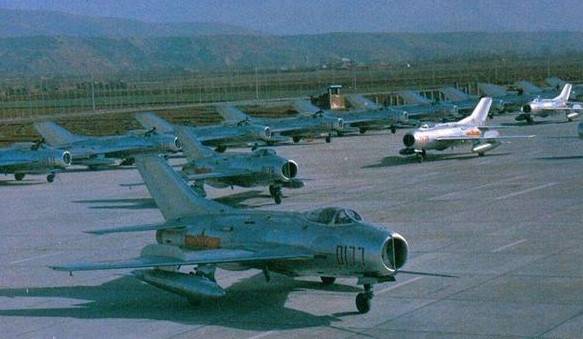
After the appearance of the Su-27SK fighters in the PLA Air Force, the beginning of their licensed production at the Shenyang aircraft plant, as the aviation regiments were saturated with modern aircraft, the obsolete fighters that had not exhausted their flight life were sent to storage bases.
China officially said goodbye to the J-6 fighter in 2010. This aircraft, a copy of the Soviet MiG-19, was the most massive jet fighter in the PLA Air Force.
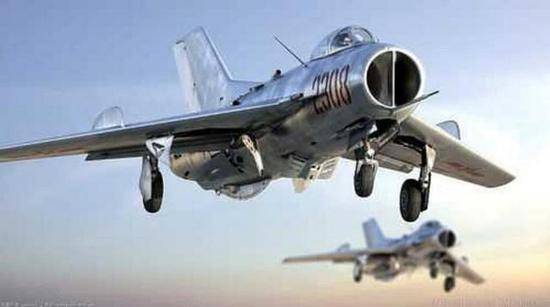
In total, more than 3000 J-6s were built in the version of a front-line fighter, air defense interceptor, reconnaissance aircraft and a two-seat trainer. In the mid-1970s, a small number of unmanned supersonic targets, known as Vo-6, were fired.
Outwardly, this model differs from the serial J-6 fighters, converted into unmanned modifications, by the absence of a cockpit canopy. Western sources wrote that the Vo-6 could be used as a cruise missile, but whether this is true is unknown. Compared to the manned modification, the radio-controlled target, devoid of the cockpit canopy, had a higher flight speed due to the lower drag. But, apparently, only a few Vo-6 radio-controlled aircraft were built.
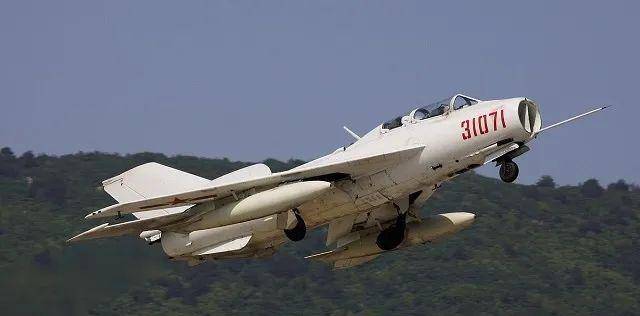
JJ-6 two-seater combat trainer
After the J-6 was officially removed from service, for about another 5 years, several dozen aircraft were operated in flight test centers, where they were used for training flights, and used in research programs, saving the life of modern fighters. According to Western estimates, 700-800 J-6 fighters have been mothballed.
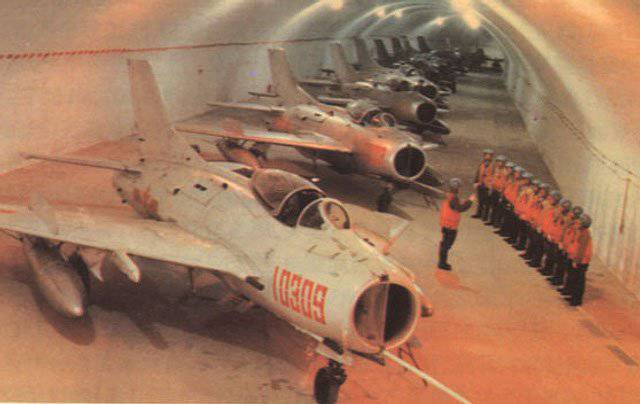
During the Cold War, in various regions of the PRC, about four dozen vast underground shelters for aviation equipment were created, capable of withstanding a nearby nuclear explosion. According to American data, up to 30 shelters can still be in working order.
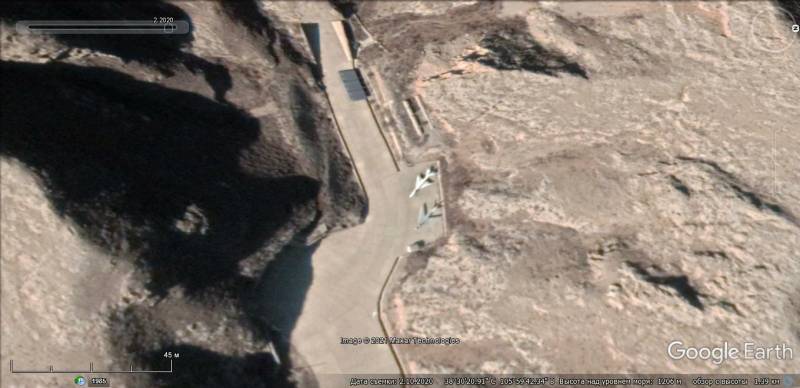
Satellite image of Google Earth: aircraft J-6 and J-7 on the site near the entrance to the underground shelter in the vicinity of Yingchuan Air Base, in the Ningxia Hui Autonomous Region. Photo taken in October 2020
In 1990-2000, several hundred obsolete, but still suitable for further use, combat aircraft were concentrated in shelters carved into the rocks.
A significant number of decommissioned aircraft are concentrated at the Lushan airbase. More than 5 J-28 fighters are stored here along with the N-300 bombers (the Chinese copy of the Il-6).
Approximately in 2005, work began on converting the planes being removed from service into reconnaissance and strike drones.
As in the case of radio-controlled targets, in the process of conversion, the ejection seat, oxygen system, cannon armament, sighting equipment and communication equipment were dismantled from the aircraft.
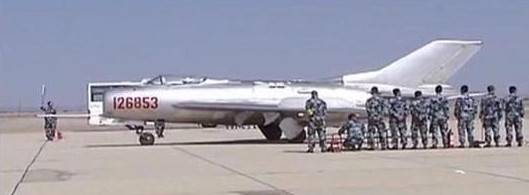
The unmanned J-6 received a radio remote control system, inertial and satellite navigation equipment. The programmable autopilot is capable of flying according to a predetermined program in the event of a loss of external control.
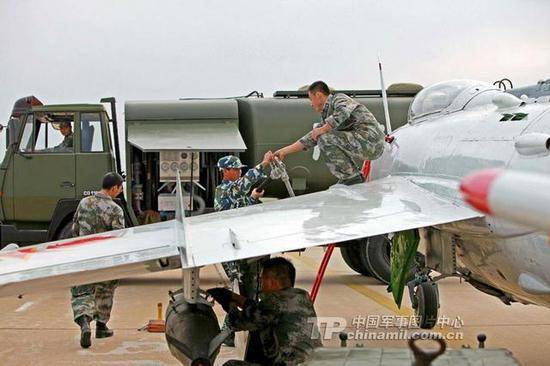
At the first stage, unmanned J-6s were armed with free-falling 100 and 250 kg bombs with a total weight of up to 1500 kg. With a maximum combat load, the flight range is 600 km. If necessary, drop tanks can be suspended during reconnaissance flights.
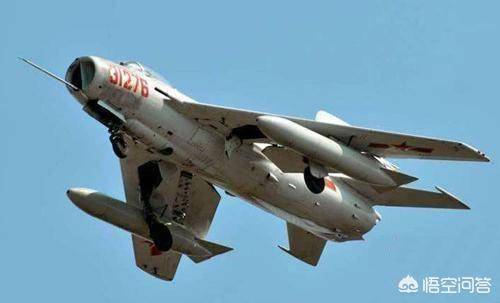
The aircraft, in the cockpit of which there is no longer a pilot, after loading the flight task into the autopilot, is able to independently go to the point with the given coordinates and carry out bombing.
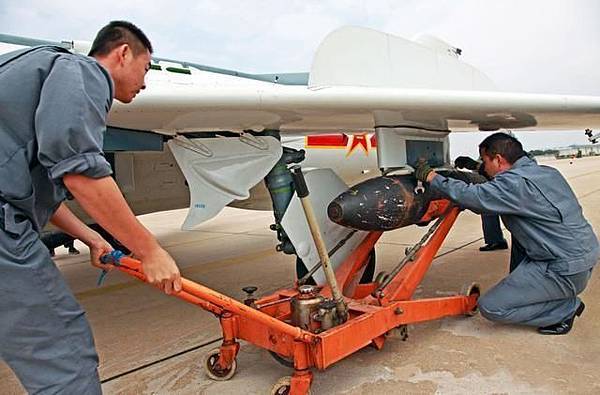
In this case, area targets, such as large enterprises, military bases, airfields, oil refineries and storage facilities for fuels and lubricants, warehouses and transport hubs, may be vulnerable. It is reported that drones are also capable of laying sea mines.
Chinese sources do not say anything about other weapons of unmanned J-6s. However, it is logical to assume that, taking into account the rapid progress of the PLA in the field of electronic countermeasures systems and high-precision weapons, unmanned jet fighters, when performing missions to break through enemy air defense, can be equipped with active and passive jamming equipment, as well as anti-radar missiles designed to destroy missile guidance stations , land and sea radars of centimeter and decimeter ranges. In addition, the modified unmanned J-6 is capable of carrying reconnaissance containers, with the broadcast of information over the radio channel in real time.
Remote control of the flight over the radio channel is carried out from a ground command post or from an air command post based on the military transport Y-8 (Chinese version of the An-12).
In 2015, the Anshun airbase built the infrastructure necessary to control the UAV via satellite channels, which theoretically makes it possible to control the actions of unmanned aerial vehicles and almost instantly receive reconnaissance information from a drone located anywhere in the world. There are both stationary and mobile control and satellite communication equipment.
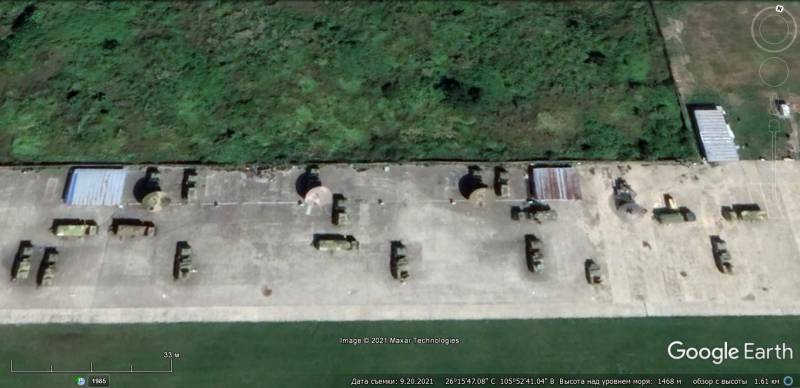
Satellite image of Google Earth: mobile control equipment for UAVs via satellite channels at Anshun airbase
Although the release of the J-6 and the two-seat training modification of the JJ-6 was carried out at the aircraft plant in Shenyang (now the Shenyang Aircraft Corporation), judging by the satellite images, the re-equipment of the retired fighters into drones took place at the Xi'an Aircraft Corporation.
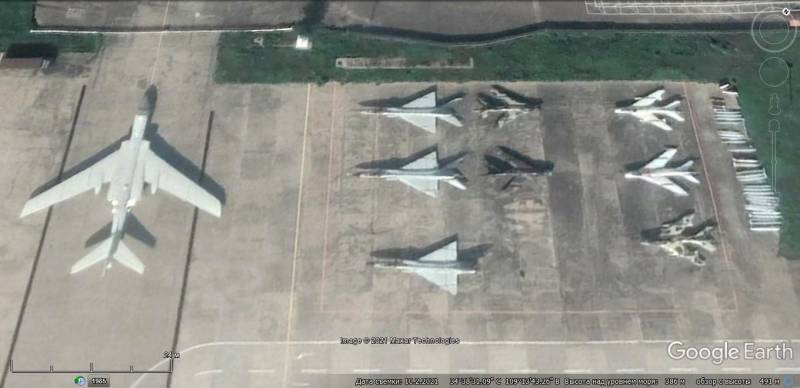
Satellite image of Google Earth: H-6 bomber, J-8II and J-6 fighters at the Xi'an Yanliang factory airfield
There is reason to believe that in addition to the frankly outdated J-6 aircraft, relatively fresh front-line fighters J-7C / D and interceptors J-8IIH, J-8IIF, J-8IIDF are being converted into reconnaissance and strike UAVs, which is also evidenced by satellite images located in free access.
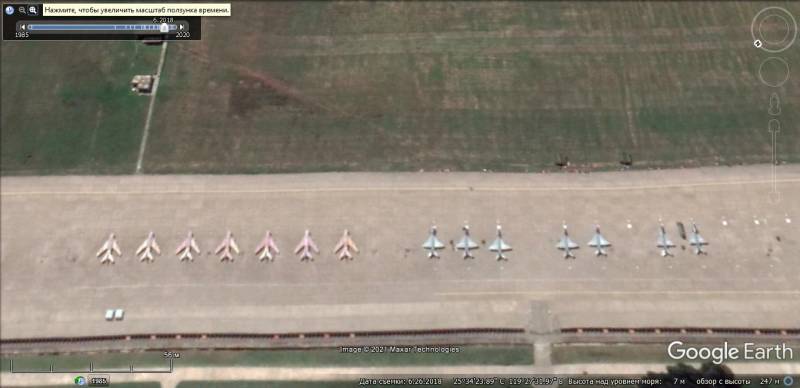
Satellite image of Google Earth: UAVs J-6 and J-7 at Longtian (Houlinkun) airbase, located 170 km from Taiwan
About 8 years ago, the PLA Air Force began the formation of separate unmanned special-purpose squadrons, equipped with radio-controlled fighters, which are directly subordinate to the command of the military districts. The main purpose of drones, which cannot be distinguished from combat fighters on radar screens, is to open the enemy's air defense system and deliver missile and bomb strikes against stationary targets with known coordinates. In peacetime, the personnel and equipment of unmanned squadrons are involved in organizing the training process of fighter aircraft and air defense forces.
Taking into account the aerodromes for the deployment of unmanned aircraft in Fujian and Guangdong provinces, it can be stated with full confidence that they are mainly intended for operations against Taiwan.
Chinese UAVs, based on obsolete fighters, are a formidable force. Based on the available data, foreign experts believe that at least 6 unmanned J-300 units are deployed in China alone.
However, these devices are not without serious drawbacks. In terms of labor intensity of maintenance, preparation time for departure and costs, they practically do not differ from manned aircraft, which requires specific ground equipment and well-trained technical personnel. In addition, the J-6 UAV is not capable of flying in formation, which means that each drone flies to the target one by one. Taking into account that the minimum launch interval is 3 minutes, it will take more than half an hour to lift a squadron of 12 vehicles into the air. This, in turn, does not allow the use of unmanned fighters in star raids, and reduces their combat effectiveness.
Nevertheless, the combat value of obsolete unmanned fighters is obvious. Their use allows you to save the most important non-renewable resource - the lives of pilots.
In the next publication, we will look at how decommissioned fighters are used in the United States, and how this is with us.
To be continued ...
Subscribe to our Telegram channel, daily additional materials that do not get on the site: https://t.me/topwar_ru
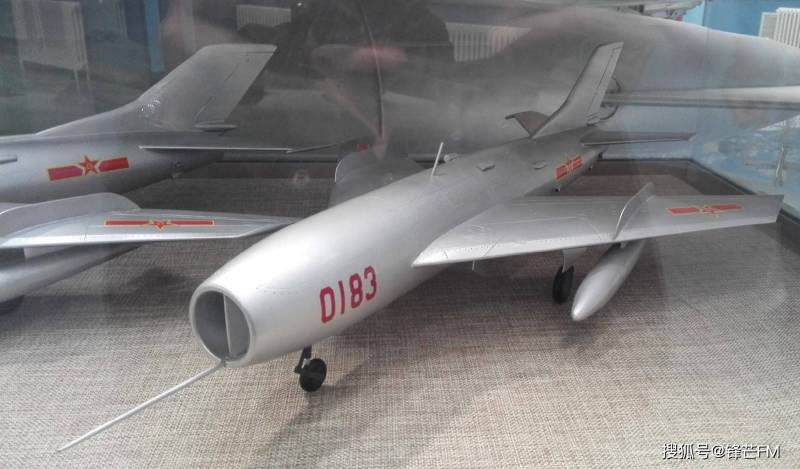
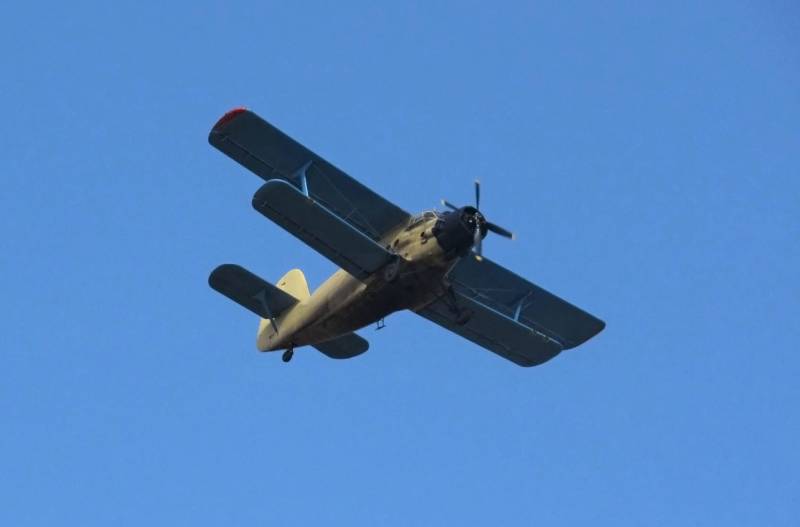
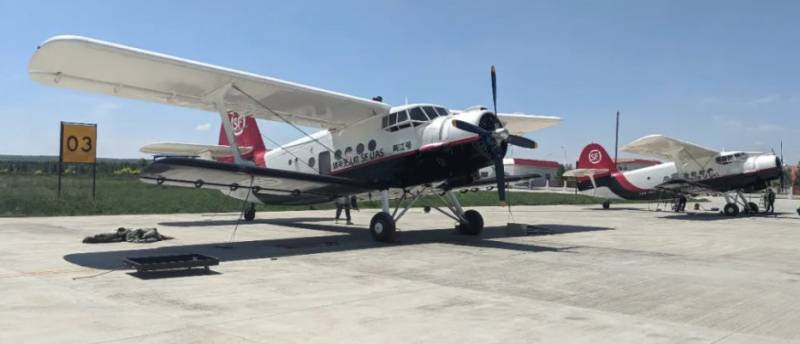
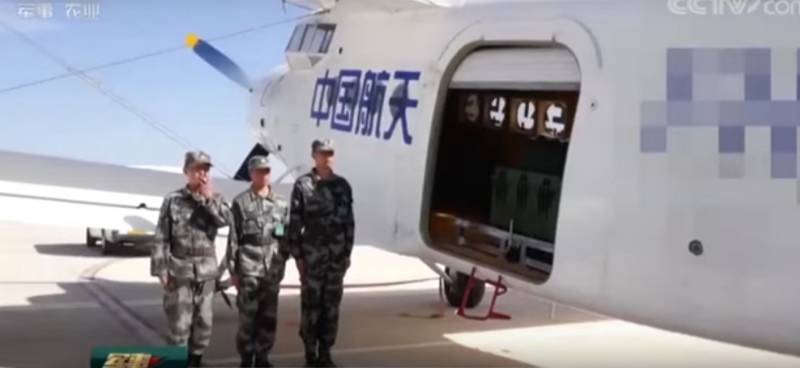
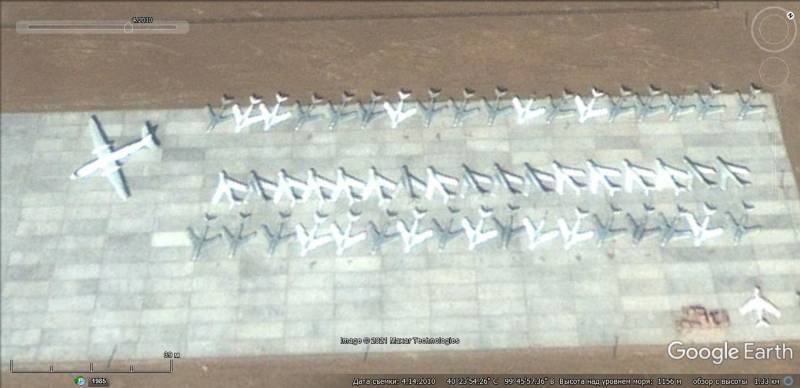
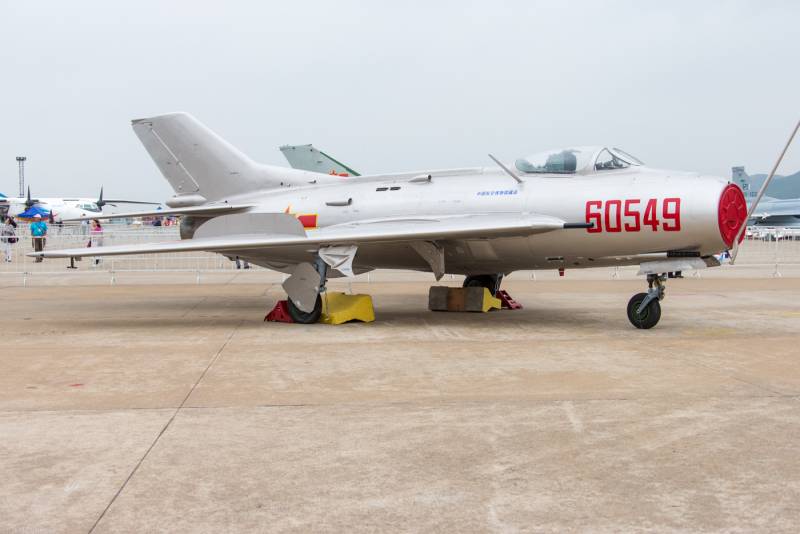

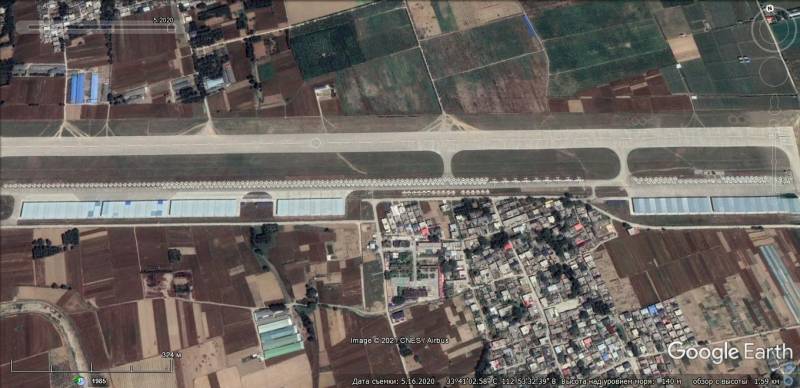
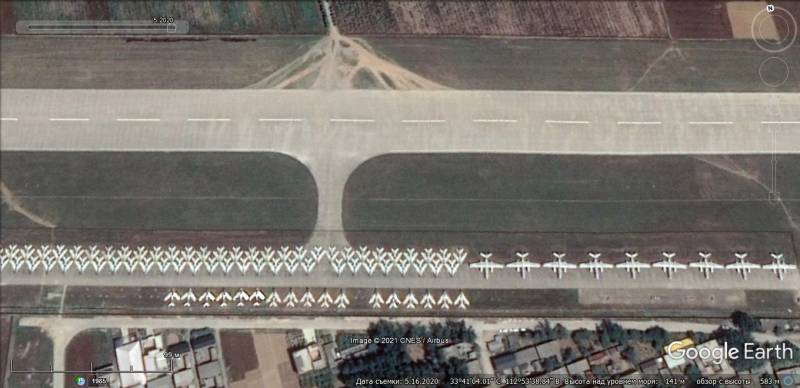
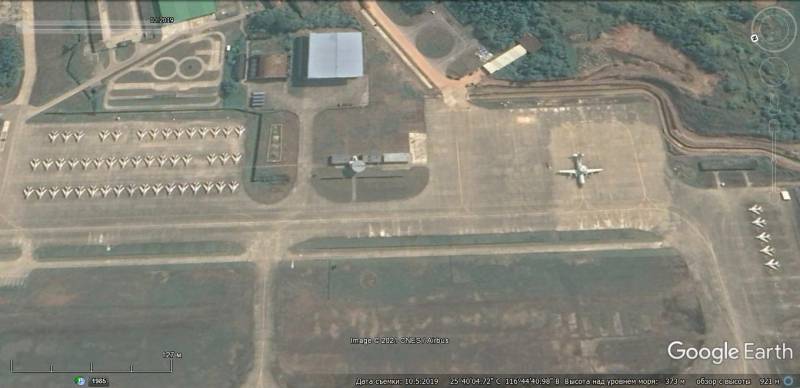
Information